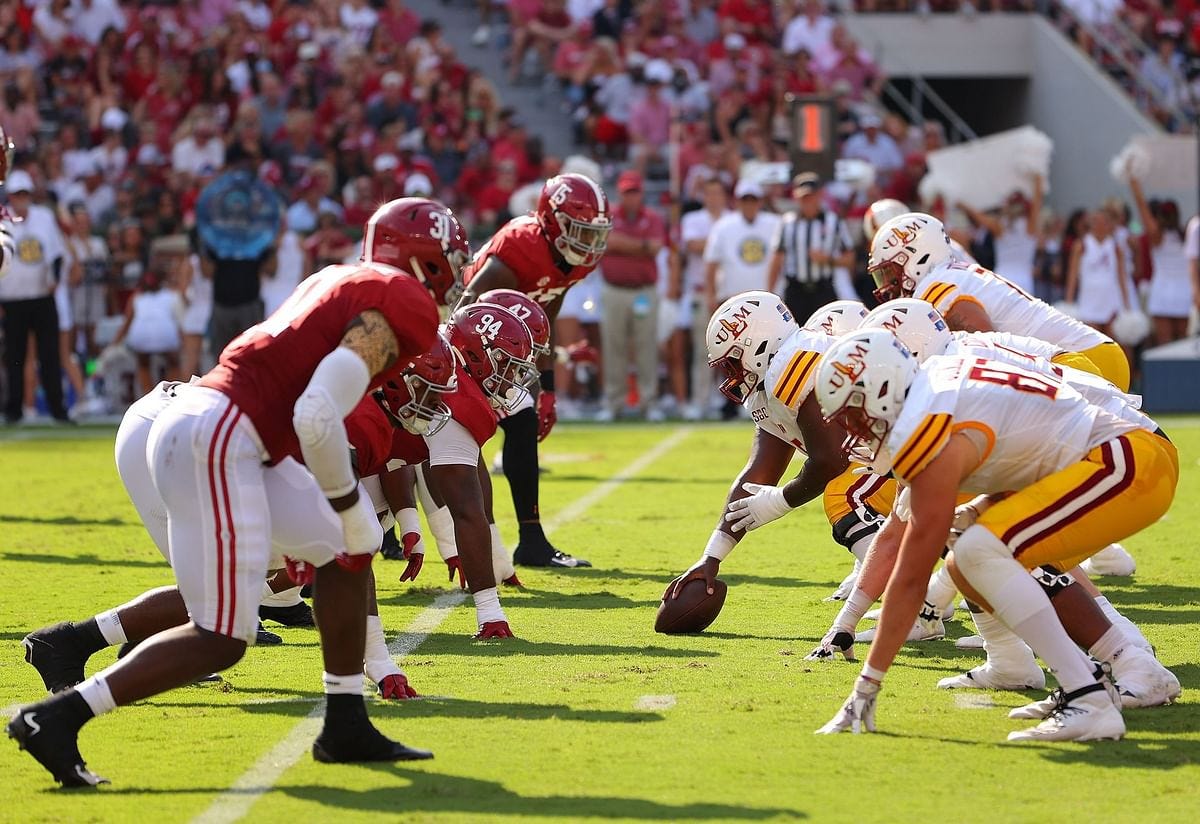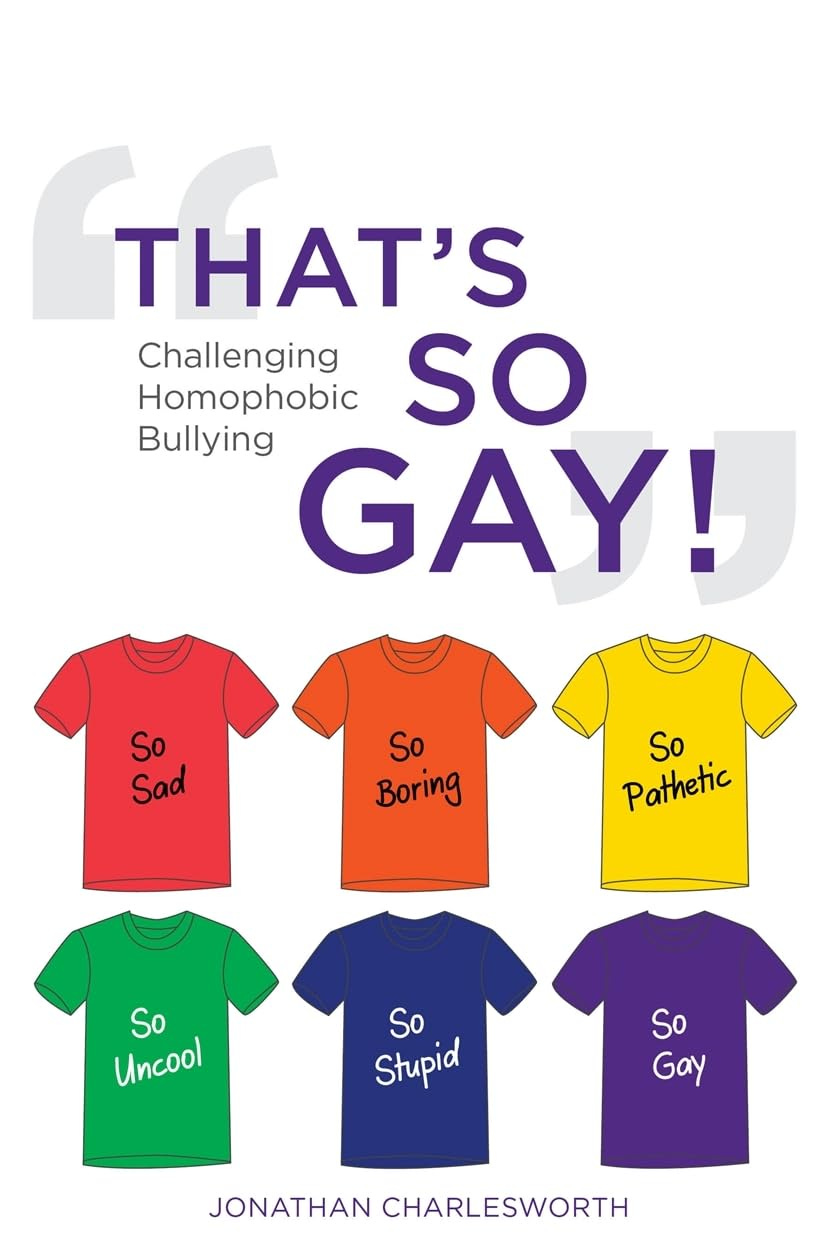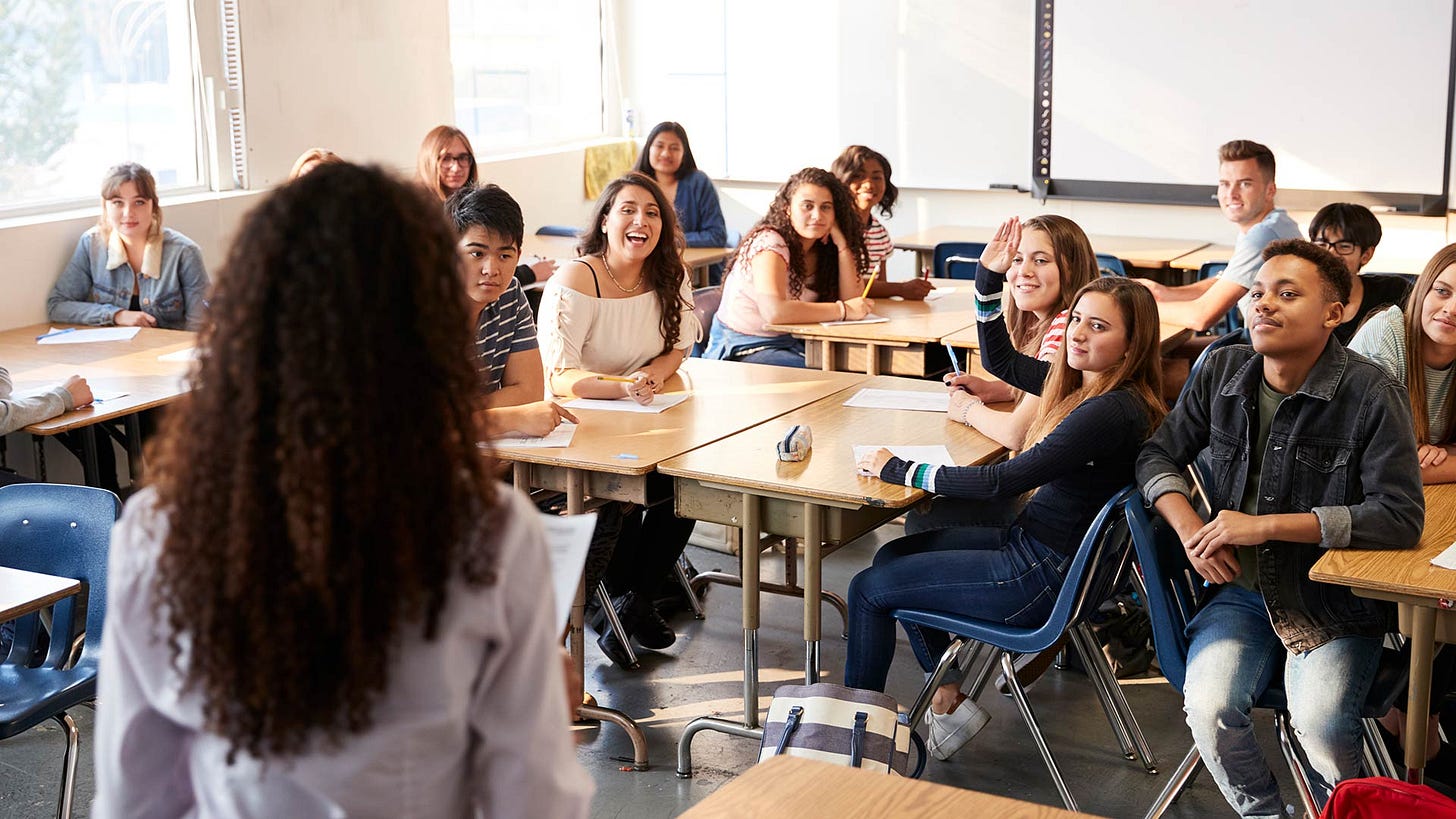Book Review of “That’s So Gay: Challenging Homophobic Bullying,” 2015, by Jonathan Charlesworth. London: Jessica Kingsley Publishers. Cloth, 182 pp.
What can teachers, social workers, counselors, and parents do about people using terms like “That’s so gay!” when responding to stimuli that are supposedly strange or out of the ordinary or feminine when masculine is sought or masculine when feminine is sought? Is it okay for kids to say things like this? Does it hurt others? Is an insult implied?
These sayings—and many others like them—lead to people becoming “others” in our society. There are many homeless people who are gay or lesbian or trans. The number of LGBTQ+ teenagers and young adult persons is very high, in fact. Are these sayings okay? That is at the heart of whether or not adults should stop others—and young people—from using these sometimes “seemingly innocent” phrases.
Charlesworth provides a British update on where education is headed in terms of stemming the bullying based on other students’ sexuality—or perceptions of it—across the pond. Still in 2024, it is necessary to speak of these damaging traditions and realities from the past: namely the use of control tactics and violence aimed at getting other students to act less “gay” and fit in the way other people feel they have the right to insist they should work to fit in.
Parents should be aware that they may be raising a child who is part of the LGBTQ+ community. Parents need to model appropriate and sensitive language and actions to not bully their children. Assuming all kids are straight is not at all helpful. It helps to ostracize and bully and shame their kids. Even if that is not what is meant, that is often the result. Parents—in concert with their teachers—must be accepting of all children. We are reminded of the reality that some students are going to identify as members of the LGBTQ+ community and we should not assume this is an aberrant possibility.(See this article for more on this important topic for teachers and parents: .https://www.psychologytoday.com/us/blog/understanding-the-erotic-code/202407/when-your-child-comes-out-as-lgbtq.)
As in all my reviews, I do not give away all of the book’s content. However, I do talk about some of the main topics and direct teachers to read the book to get some answers to the questions raised here.
We know the problem is still there, and we need to know ways to begin resolving it. The author provides some good information about British laws and organizations helping educators better understand the diversity and reality of the students in their classrooms. It is very interesting to see what is happening in Britain at the same time we as educators here are struggling to understand differences and help the members of our learning communities embrace all who are present. Valuing the other members of the learning community is part of our mission.
The author reminds us that bullying will eventually not exist if the other members of the learning community do not accept it. Standing by idly and taking on the view that there will always be violence, bullying, cheating, and other forms of destructive behavior in schools is not part of the answer. As one might say, it is part of the problem.
If educators, parents, counselors, and social workers stand up and speak against bullying and other complex forms of psychological torture, then they are embracing an important part of their work indeed.
Understanding bullying, violence, coercion and other radical behaviors are signs of trouble and ignorance at home is an important step for teachers to take. The bullying comes from someplace, meaning this is behavior students are learning somewhere. If bullying is not addressed and stopped by educators, then students are clearly just learning what they are being taught.
Sadly some students—and even some educators—feel they are justified in helping to remind other members of the school community what is gay and what is not. There are many reasons for pointing out what they like to call “gay” acts or stereotypes, such as telling a student playing the clarinet makes them gay or telling them if you like “One Direction” you must not know they are gay.
This chauvinism about what some people think is gay or is not gay is common still in many schools and has its counterparts in other areas and realms. For example, some students feel compelled to dwell on some people who are overweight and make that topic a daily grind. Others focus on manners of dress or the color of one’s skin. Constant negative feedback about one’s perceived race or nationality in the long run also produces stress leading to difficulties for the persons being bullied.
We are reminded also by counselors and others who help people deal with bullying that saying things like “That’s so gay” should never be considered okay. These are hurtful phrases. There is always somebody in the group who is hurting. There is always somebody in the group who is questioning or “trying to deal.”
It’s too bad trying to deal includes figuring out what to do about what your parents tell you… what your teacher says… what people in the grocery store are telling you… what friends and siblings explain to you. Trying to deal is a lot of work for young people indeed.
Psychiatrists and social workers remind us on a regular basis that these phrases are just never okay. (See this article as an example: https://www.psychologytoday.com/us/blog/understanding-the-erotic-code/201803/thats-so-gay-is-just-so-wrong.)
I recommend this book to social workers, counselors, and school leaders for two reasons:
1) it shows us a wider perspective on what is happening and this view is essential for understanding a bigger context; and
2) we may have English language learners (ELLs) in our classrooms who come from cultures and school environments similar to the traditions and realities to the British examples discussed by Charlesworth. There are, in fact, ELLs who are gay, lesbian, trans, bisexual, trans, and questioning.
Knowing that bullying, its acceptance, and its solutions, are all complex topics, educators can make some progress in dealing with these things. The book could be helpful reading for professional development, graduate courses, or personal reading for teachers interested in other cultures.
It is interesting to consider what the author says about curricular possibilities in this book. Remember that there is still much work to be done to teach about the contributions of gays, lesbians, transgendered, and many other individuals in our world cultures.






